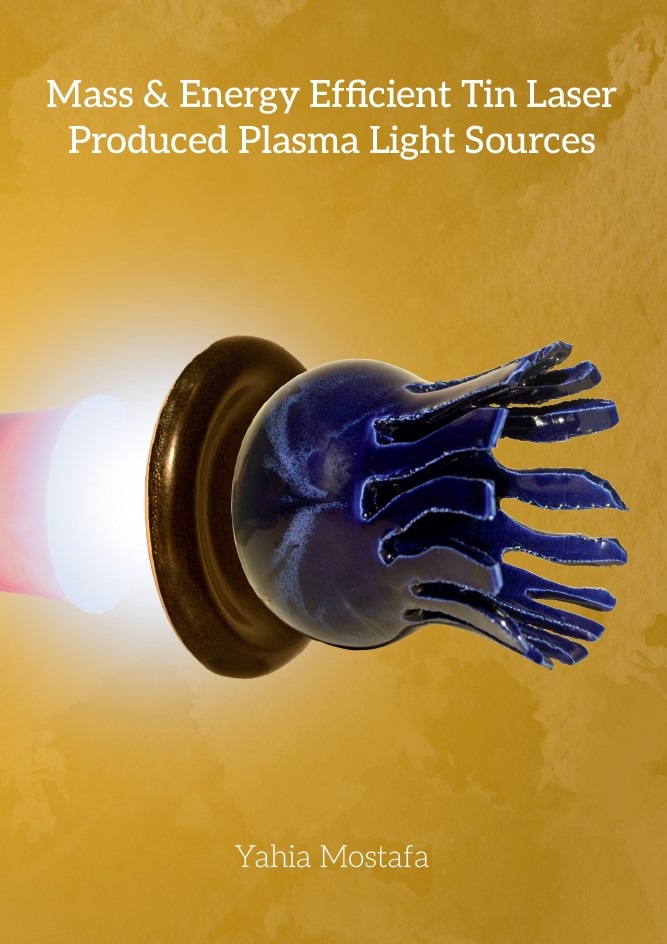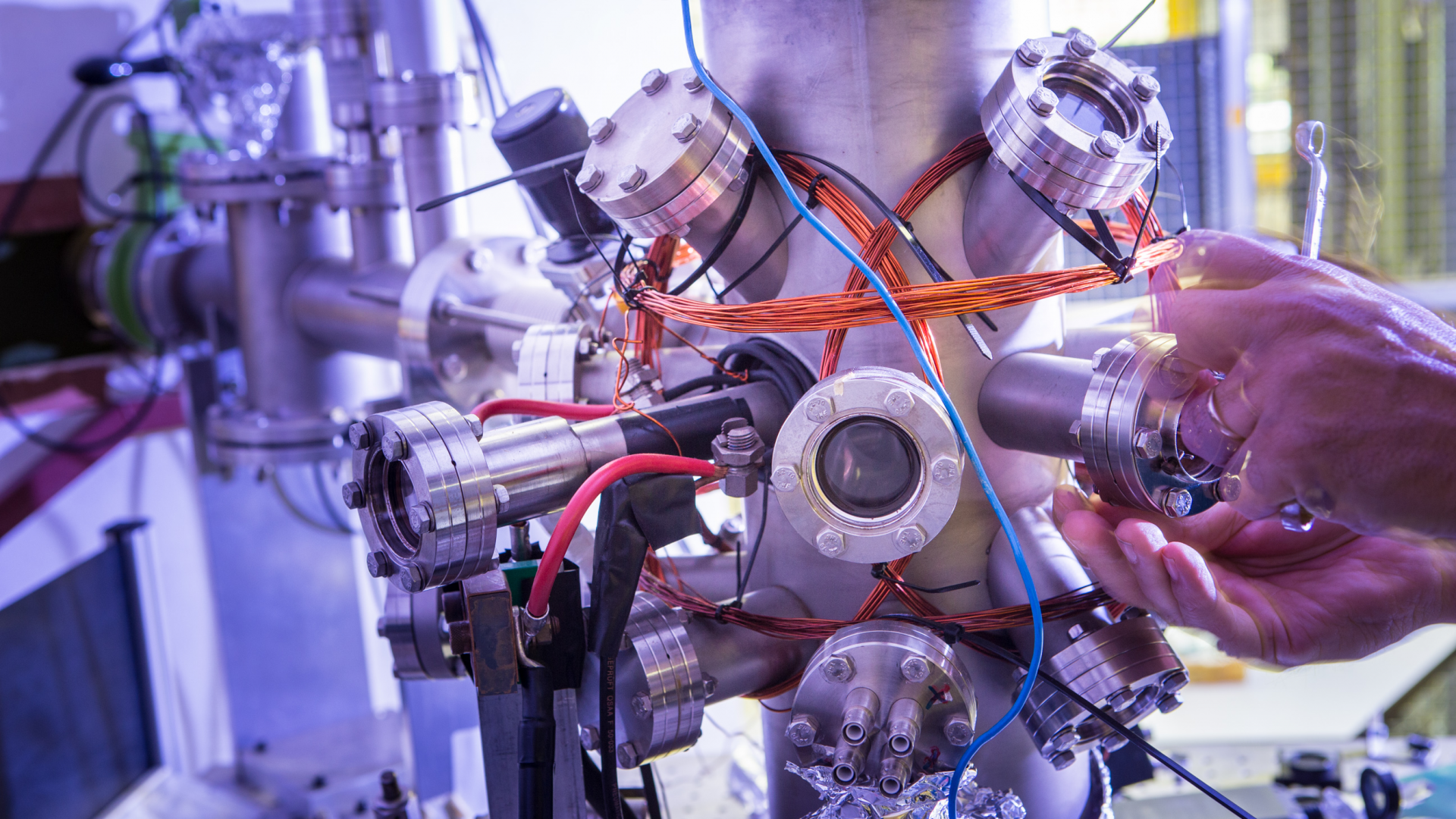Mass & Energy Efficient Tin Laser Produced Plasma Light Sources
We set out to explore and characterize tin plasma extreme ultraviolet light sources alternative to the current industry standard. Specifically, we consider 2 μm wave- length lasers as an alternative to the state-of-the-art 10 μm wavelength drivers used in high-volume nanolithographic manufacturing. This consideration is based on the higher wall-plug efficiency of solid-state lasers capable of producing 2 μm light , as well as high laser-to-EUV conversion efficiencies. Combined, a more efficient EUV light source may be in our hands to investigate. We investigated 2-μm-laser-produced plasma light sources primarily experimentally in a controlled setup. We streamed droplets of liquid tin through a nozzle in a high- vacuum chamber. The droplets were preformed using a low energy 1 μm wave- length ’pre-pulse’ laser, altering the morphology and mass distribution of the tin target. The targets formed were thin, relatively flat tin sheets. Subsequently, a higher energy, plasma generating, 2 μm ’main-pulse’ impacts the tin target. The generated plasma emits primarily at 13.5 nm as well as a cascade of other wavelengths and highly energetic positively charged tin ions.









